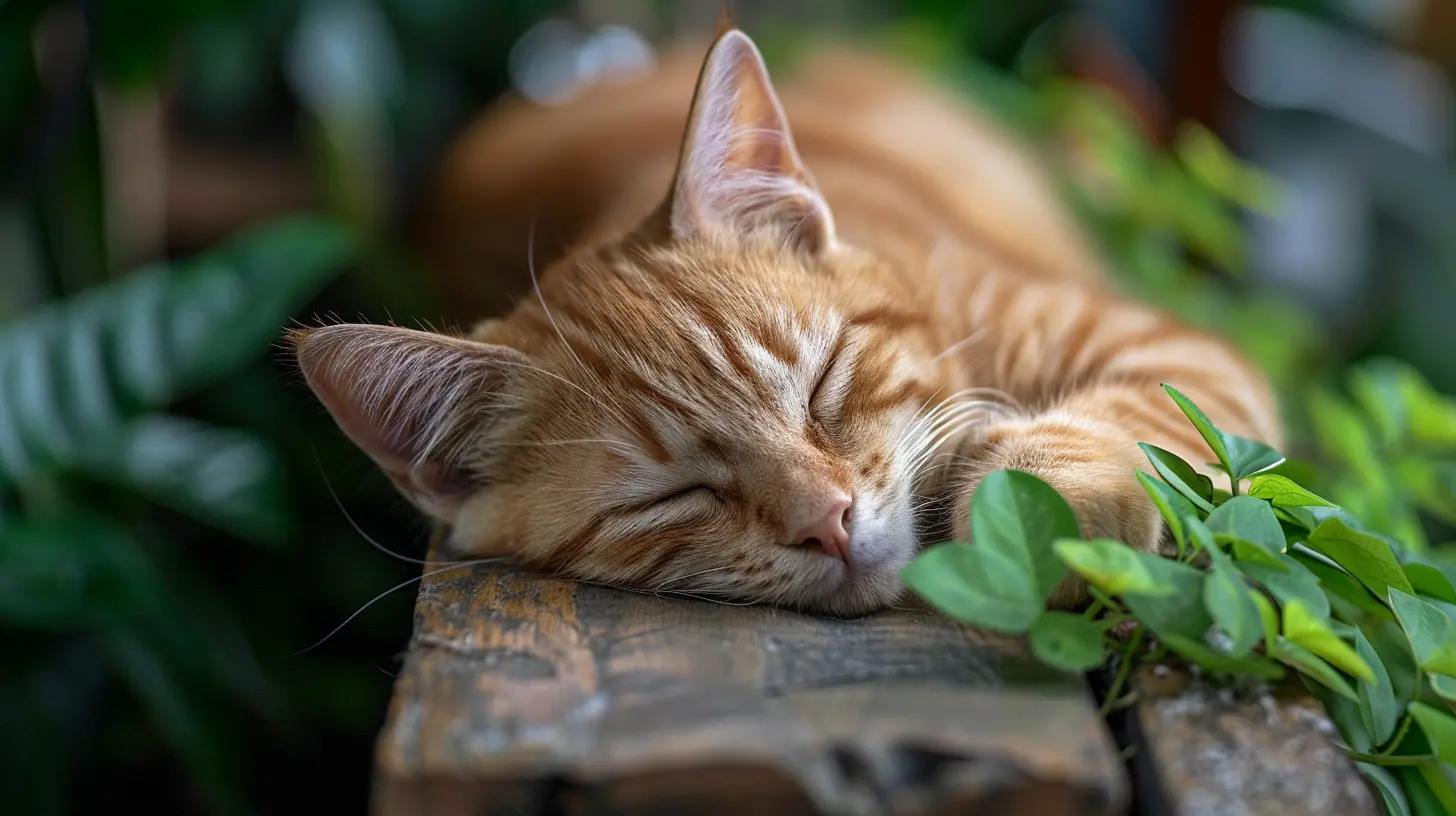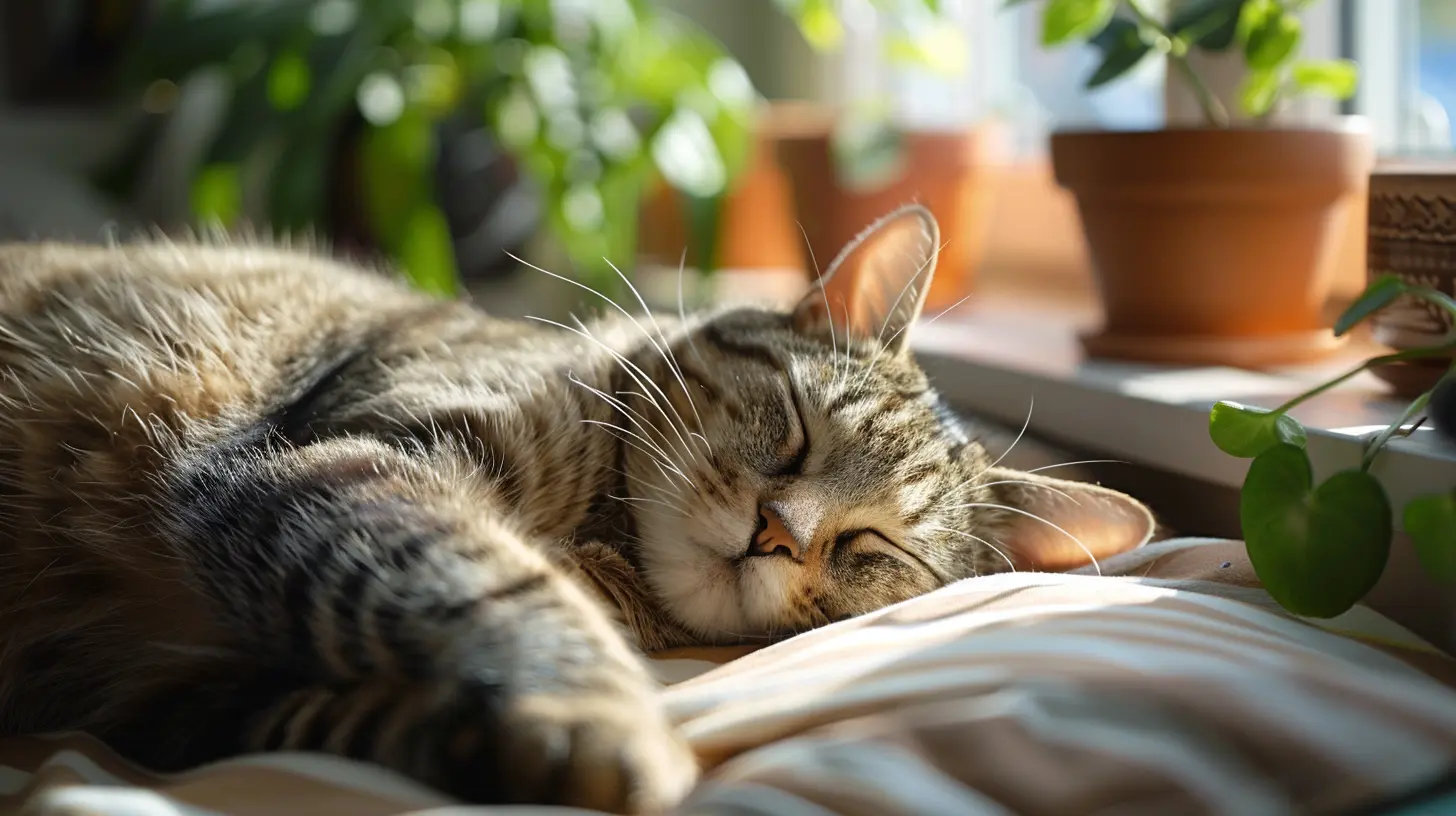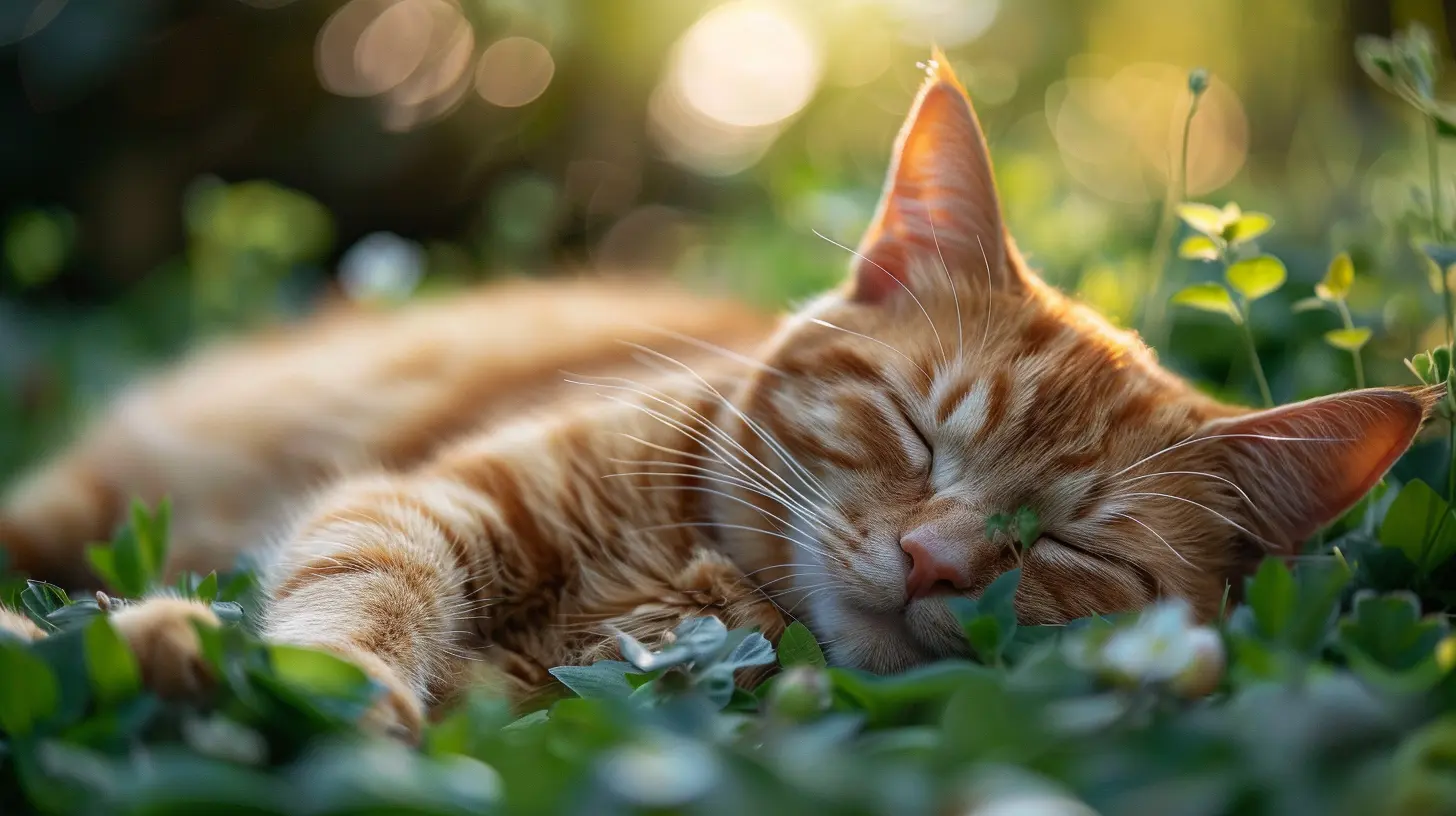The Benefits of Napping and How to Nap the Right Way
29 November 2024
Who doesn’t love a good nap? Whether it's a quick snooze after lunch or a power nap between work tasks, naps are a small luxury that can deliver big benefits. But here's the thing: napping isn't just for kids. It’s actually a powerful tool for adults, too! When done right, naps can recharge your mind, boost productivity, and even improve your overall health. Sounds dreamy, right? Let’s explore the benefits of napping and learn how to nap the right way.
Why Napping Isn’t Just for Kids
For some reason, society tends to dismiss napping as “lazy” or unnecessary unless you’re under 5 years old. But guess what? Science begs to differ! Napping has been shown to enhance cognitive function, mood, and physical well-being. In a way, naps are like hitting the refresh button on your brain—allowing you to feel sharper and more energetic afterward.Think about it: how many times have you powered through the afternoon slump only to feel like a zombie staring at your computer screen? Instead of guzzling another cup of coffee, a nap could be the natural pick-me-up your body craves.
The Science-Backed Benefits of Napping
Let’s dig into why napping is a game-changer. Here are a few science-backed benefits:1. Boosts Energy and Alertness
Ever felt your eyelids getting heavy right after lunch? That’s your body’s natural circadian rhythm slowing down. A quick nap can recharge your energy levels faster than a double espresso. Studies have shown that even a 10-20 minute nap can significantly improve alertness and cognitive performance.2. Improves Memory and Learning
Your brain is like a sponge, constantly absorbing information. But it needs rest to process and store that data. Napping has been shown to enhance memory and improve your ability to learn new things. Think of it like letting your brain "save" all the information you’ve gathered during the day.3. Boosts Creativity
Feeling stuck or uninspired? A nap might be the reset button you need. Naps stimulate the right hemisphere of your brain, which is responsible for creative thinking. So next time you’re trying to tackle a tough problem or come up with a brilliant idea, a quick snooze might help spark creativity.4. Improves Mood
We all get grumpy when we’re tired, right? Napping is like giving your mood a much-needed facelift. Naps reduce stress and lower cortisol levels, helping you feel more relaxed and refreshed.5. Supports Heart Health
Here’s a surprising one: Napping might actually be good for your heart. Research has shown that occasional naps can help lower blood pressure and reduce the risk of heart disease. Just another reason to catch some midday Z’s guilt-free!6. Enhances Physical Performance
Whether you’re lifting weights, running, or just trying to make it through your evening workout, a nap can give you the extra energy boost you need. Athletes often incorporate naps into their routines to enhance focus and improve their physical performance.
Common Myths About Napping
Alright, before we dive into how to nap correctly, let’s bust some common myths.Myth 1: Napping Makes You Lazy
False! Napping is actually a productivity tool. It helps reduce mental fog, enhance focus, and keep your motivation levels high. Remember, even high-performing people like Leonardo da Vinci and Albert Einstein were avid nappers.Myth 2: Only Children Need Naps
Adults need naps too! While it’s true that our sleep patterns change as we age, naps can still provide major health and cognitive benefits at any age.Myth 3: Long Naps Are Better
Not always. Long naps can sometimes make you feel groggy because they disrupt your deep sleep cycles. Short and strategic naps are often more effective.Myth 4: Naps Will Ruin Your Night’s Sleep
If done properly, naps shouldn’t interfere with your nighttime sleep. The key is timing your naps carefully (we’ll get into that in the next section).
How to Nap the Right Way
Now that we’ve covered the benefits, let’s talk about how to nap like a pro. Because yes, there’s actually a right and wrong way to nap.1. Time It Right
Timing is everything when it comes to naps. The best time to nap is usually between 1 PM and 3 PM, when your energy levels naturally dip. Napping too late in the day can interfere with your ability to fall asleep at night, so aim for that sweet spot in the early afternoon.2. Keep It Short
When it comes to napping, less is more. A power nap of 10-20 minutes is perfect for boosting energy and alertness without making you feel groggy. If you’re in desperate need of deeper rest, a 90-minute nap might work, as it allows your body to complete a full sleep cycle.3. Create a Nap-Friendly Environment
The right setting can make all the difference. Find a quiet, dark, and comfortable spot to nap. Use an eye mask or earplugs if needed. If you’re in a pinch (like at work), consider reclining your chair and using noise-canceling headphones to create a calming atmosphere.4. Set an Alarm
Avoid the temptation to nap for “just five more minutes.” Set an alarm to ensure you don’t oversleep. Trust me, waking up groggy from a 2-hour nap is not the vibe we’re going for here.5. Incorporate Relaxation Techniques
Sometimes it’s hard to fall asleep quickly, especially if your mind is racing. Deep breathing, meditation, or listening to calming music can help you wind down and fall into a restful nap faster.6. Skip the Caffeine Before Napping
Caffeine stays in your system for hours, so drinking coffee or tea right before a nap can totally backfire. Save your afternoon latte for after your nap if you still need an extra boost of energy.Different Types of Naps
Not all naps are created equal. Depending on your needs, you might want to try one of these:Power Nap (10-20 Minutes)
Perfect for a quick energy refill. These naps improve focus, alertness, and reaction times without leaving you feeling groggy.Recovery Nap (30-60 Minutes)
If you’re sleep-deprived, a slightly longer nap can help you catch up on rest. This type of nap improves memory and decision-making, but you might feel groggy afterward.Full Sleep Cycle (90 Minutes)
A 90-minute nap allows you to go through an entire sleep cycle, including deep sleep and REM sleep. This is great for boosting creativity and problem-solving skills.When NOT to Nap
While naps are amazing, they’re not always the answer. Avoid naps if:- You have trouble falling asleep at night.
- You’re using naps to replace a consistent nighttime sleep routine.
- You find that naps consistently leave you feeling groggy or disoriented.
In these cases, it’s better to focus on improving your overall sleep hygiene (things like sticking to a regular bedtime, avoiding screens before bed, etc.).
Final Thoughts: Embrace the Nap Life
Napping is like giving your body and brain a mini-vacation in the middle of the day. Whether you’re looking to boost your productivity, improve your mood, or simply recharge your batteries, naps can be a total game-changer. And now that you know how to nap the right way, you’re ready to take full advantage of this incredible self-care tool. So, go ahead—close your eyes, take a deep breath, and enjoy the magic of a perfectly-timed nap. You deserve it.all images in this post were generated using AI tools
Category:
Sleep HealthAuthor:

Laura Hudson
Discussion
rate this article
14 comments
Poppy Good
Napping can significantly enhance mood, cognitive function, and overall health. By practicing optimal napping techniques—like timing and duration—you can maximize these benefits, leading to improved productivity and well-being throughout the day. Happy napping!
February 10, 2025 at 5:40 AM

Laura Hudson
Thank you for highlighting the positive impact of napping! Practicing the right techniques can indeed boost mood and productivity. Happy napping to you too!
Beatrice McHugh
Napping can be a powerful tool for rejuvenation and mental clarity. Embracing this simple practice can boost your mood, enhance productivity, and improve overall well-being. Remember to keep naps short and find a quiet space. Prioritize your health—your body and mind will thank you for it! Happy napping!
January 31, 2025 at 4:07 PM

Laura Hudson
Thank you for your insightful comment! Napping is indeed a valuable practice for enhancing well-being and productivity. Happy napping to you, too!
Aaron Clayton
Napping: the art of hitting pause on life's chaos! Short power naps can boost productivity and creativity. Just remember, timing is key—aim for 20-30 minutes. Embrace your inner cat and let those z's recharge your brilliance! 💤✨
January 27, 2025 at 6:15 PM

Laura Hudson
Absolutely! Napping is a powerful tool for recharging both mind and body. A quick 20-30 minute nap can enhance focus and creativity, making it an essential part of a productive day. Embrace it! 💤✨
Luella Scott
Napping boosts energy and productivity; follow tips for the perfect nap to maximize its benefits!
January 24, 2025 at 4:04 AM

Laura Hudson
Thank you for your comment! Napping can indeed enhance energy and productivity. I hope the tips in the article help everyone maximize their napping benefits!
Vireo McAdams
Napping is a game changer! Great tips for a refreshing boost!
January 21, 2025 at 5:59 PM

Laura Hudson
Thank you! I’m glad you found the tips helpful—napping can truly transform your day!
Everett Shaffer
Napping offers great health benefits, including improved mood and cognitive function. Remember to keep naps short, ideally 20-30 minutes, to maximize energy without disrupting nighttime sleep.
January 17, 2025 at 5:10 AM

Laura Hudson
Thank you for highlighting the importance of short naps! You're absolutely right—keeping naps to 20-30 minutes can enhance mood and cognitive function without interfering with nighttime sleep.
Tessa McNaughton
While napping offers benefits, it's essential to balance duration and timing to avoid disrupting nighttime sleep.
January 8, 2025 at 3:27 AM

Laura Hudson
Thank you for your insight! Balancing nap duration and timing is key to maximizing benefits while preserving nighttime sleep.
Silas Hensley
This article effectively highlights the advantages of napping. However, it could benefit from more detailed tips on ideal nap duration and timing to help readers maximize their napping benefits. Great foundational overview!
January 2, 2025 at 5:06 PM

Laura Hudson
Thank you for your feedback! I appreciate your suggestion and will consider adding more detailed tips on nap duration and timing in future updates.
Kassandra Hodge
Great insights! Napping can truly rejuvenate our minds and bodies—let's embrace this simple yet powerful practice!
December 28, 2024 at 3:43 AM

Laura Hudson
Thank you! I'm glad you found the insights helpful. Embracing napping can indeed enhance our well-being!
Raine McTavish
Napping sounds intriguing! I’d love to learn how to incorporate it effectively into my daily routine for better health.
December 25, 2024 at 4:28 AM

Laura Hudson
Absolutely! To effectively incorporate napping into your routine, aim for a short nap of 20-30 minutes in the early afternoon. This helps boost alertness without disrupting nighttime sleep. Happy napping!
Veronica McKale
Napping isn't lazy—it's essential! Embrace the power of restorative sleep for better health and productivity.
December 18, 2024 at 4:24 PM

Laura Hudson
Absolutely! Napping is a powerful tool for rejuvenation and can significantly enhance both health and productivity. Embrace it!
Uriel Cross
Thank you for this insightful article on napping! It’s refreshing to see the benefits highlighted. I appreciate the tips on how to nap effectively; they will certainly help improve my daily energy levels!
December 14, 2024 at 5:22 PM

Laura Hudson
Thank you for your kind words! I'm glad you found the article helpful and that the tips will enhance your napping experience!
Hope Cook
Napping boosts productivity—make it a daily habit!
December 4, 2024 at 5:22 PM

Laura Hudson
Absolutely! Incorporating a daily nap can recharge your mind and enhance focus, making it a powerful productivity booster.
Talis McAlister
Great article! Napping can truly enhance productivity and well-being. I appreciate the tips on how to nap effectively—perfect for balancing our busy lives. Thank you!
November 30, 2024 at 3:43 AM

Laura Hudson
Thank you for your kind words! I'm glad you found the tips helpful for enhancing productivity and well-being. Happy napping!
MORE POSTS

Transitioning to a Vegan Diet: Essential Tips for Beginners

Bone-Building Benefits of Resistance Training

How to Design a Balanced Outdoor Routine for All Fitness Levels

The Role of Omega-3 Fatty Acids in Pregnancy Health

Understanding the Sleep Cycle: What Happens While You’re Asleep?

Creating a Healthy Home: Transforming Your Living Space

Training Like a Pro: How to Approach Split Routines

Veganism for the Whole Family: Tips for Kids and Adults Alike

Strength Training for Women: Breaking the Stereotypes